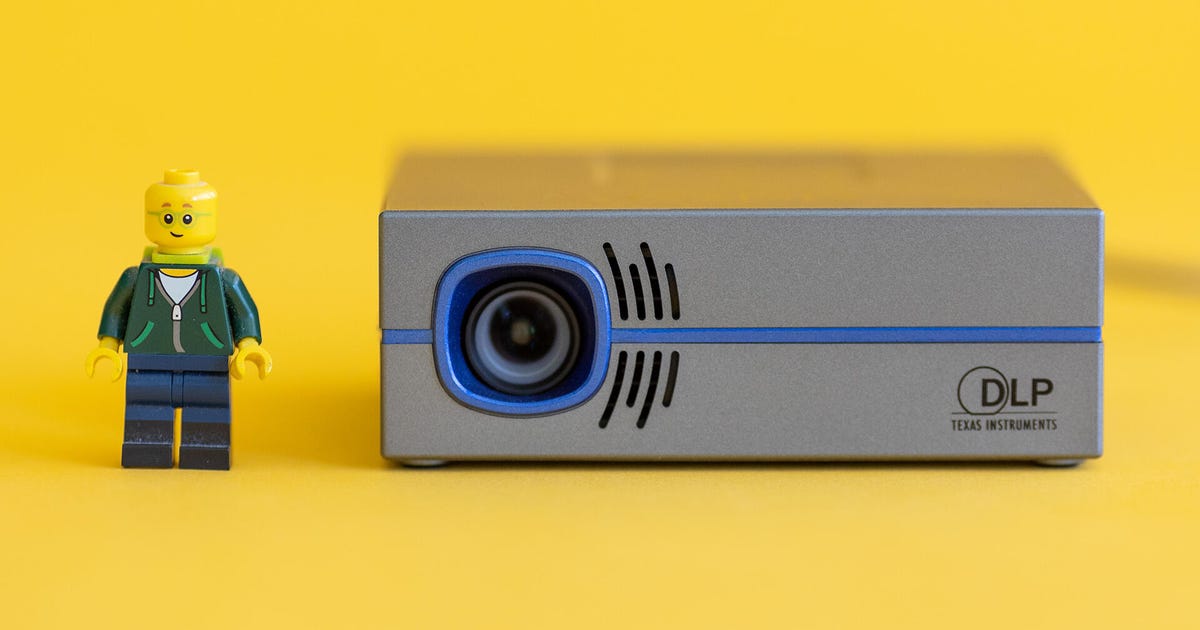
AAXA P8 Portable Projector Review: Teeny Price, Tiny Size, Totally Bright
The AAXA P8 is dinky and cheap even compared to other portable projectors I’ve reviewed. The Nebula Capsule is almost as minuscule but it’s a whopping 20% more expensive. Impressively, the P8 has a full-size HDMI input, Bluetooth and a headphone jack. Disappointingly, it’s not powered by USB, so you have to use the implicated power adapter, which adds bulk to an otherwise minuscule package. It also lacks a battery. The image quality is fine, given its stamp and size, but like its bigger brother, the P6X, light output is its main strength.
The P8 is a lot brighter than it has any lustrous to be. I measured 230 lumens, which is approximately half what the P6X puts out but a huge 2.5x what I measured with the Capsule. Plus, there are a handful of streaming apps built in, which is definitely convenient. So overall, for the price, you get a big image from a tiny, tiny projector.
Pico pico
- Native resolution: 960×540 pixels
- HDR-compatible: No
- 4K-compatible: No
- 3D-compatible: No
- Lumens spec: 430
- Zoom: No
- Lens shift: No
- Lamp life (Normal mode): ~30,000 hours
The P8 is not an HD resolution projector. It’s barely more than standard definition with 960×540 pixels. As a result, the pixels can be quite determined and visible with all but the smallest of projected images. Today the cheapest TVs have at least HD resolution but projectors are a different animal. Given the size and price of the P8 it’s neither unexpected nor a deal breaker.
AAXA claims 430 lumens of scrumptious output, and I measured approximately 230 on the P8. To put that in perspective, the similarly sized and priced Anker Nebula Capsule puts out 85, at what time the more expensive Xiaomi Mi Smart Projector 2 only assembled 162. The P8 is even brighter than the more expensive Samsung Freestyle, which puts out 197 lumens despite its $800 stamp tag. The bigger P6X puts out 437.
There’s no lens progresses or zoom: Focus is achieved via a small wheel on the side.
The LEDs are excited for 30,000 hours. You’re far more likely to lose the P8 between the sofa cushions afore the LEDs die out.
Ins and outs
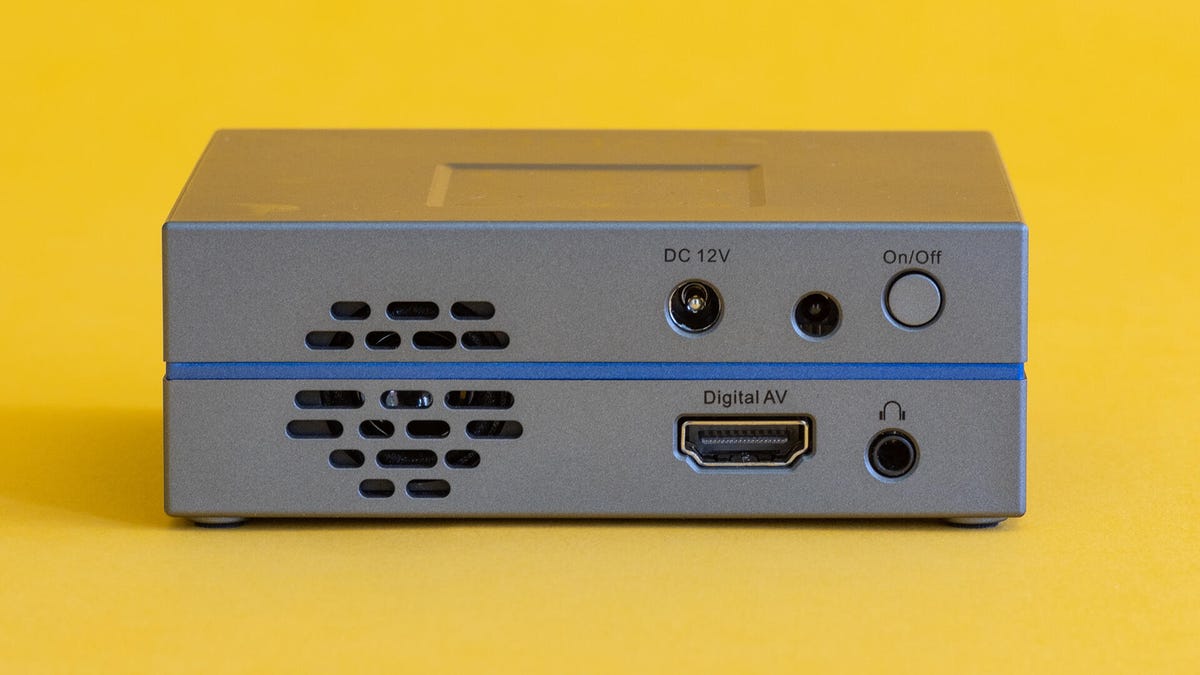
The AAXA P8’s back panel, with an HDMI input and headphone output. On the side are the USB inputs.
Geoffrey Morrison
- HDMI inputs: 1
- USB ports: 2 (A and C)
- Audio output: Headphone output/Bluetooth
- Internet: 2.4GHz/5GHz
- Remote: Not backlit
There’s a full-size HDMI input, which just makes the P8 easier to live with compared to some projectors that use micro- or mini-HDMI and obliged an adapter. Surprisingly, for the size and price, there are a handful of built-in streaming apps. Netflix and YouTube are the headliners, joined by Twitch, Vimeo, Haystack News and Tubi.
If you dig into the P8’s menus you can find the much-dreaded Aptoide prevent. This is a semi-offshoot of the Google Play Store: There are some apps you’ll eye and a lot that you won’t. Worse, the the majority of them don’t work as you’d expect. Aptoide is current among lower-priced projectors.
Like all inexpensive projectors it uses a mobile version of Netflix, more like what you’d find on your phone. This exploiting the interface is less user-friendly using a remote, which you have to use sincere there’s no AAXA app. It also means you can’t cast to the projector from your phoned since Netflix thinks the projector itself is a source. So, oddly, you could theoretically cast FROM the projector TO spanking display. I didn’t test this, but that’s what it says on veil. It says a lot of things on screen, like spanking error messages, pop-ups that are difficult to get rid of, and more. I did, eventually, get it running, so it’s in there. Just don’t examine the smooth experience like you get on most spanking devices.
YouTube works as you’d hope, though, letting you pick what you want on your phoned and cast it over to the projector (oddly, labeled “ATV_229” not P8 or AAXA).
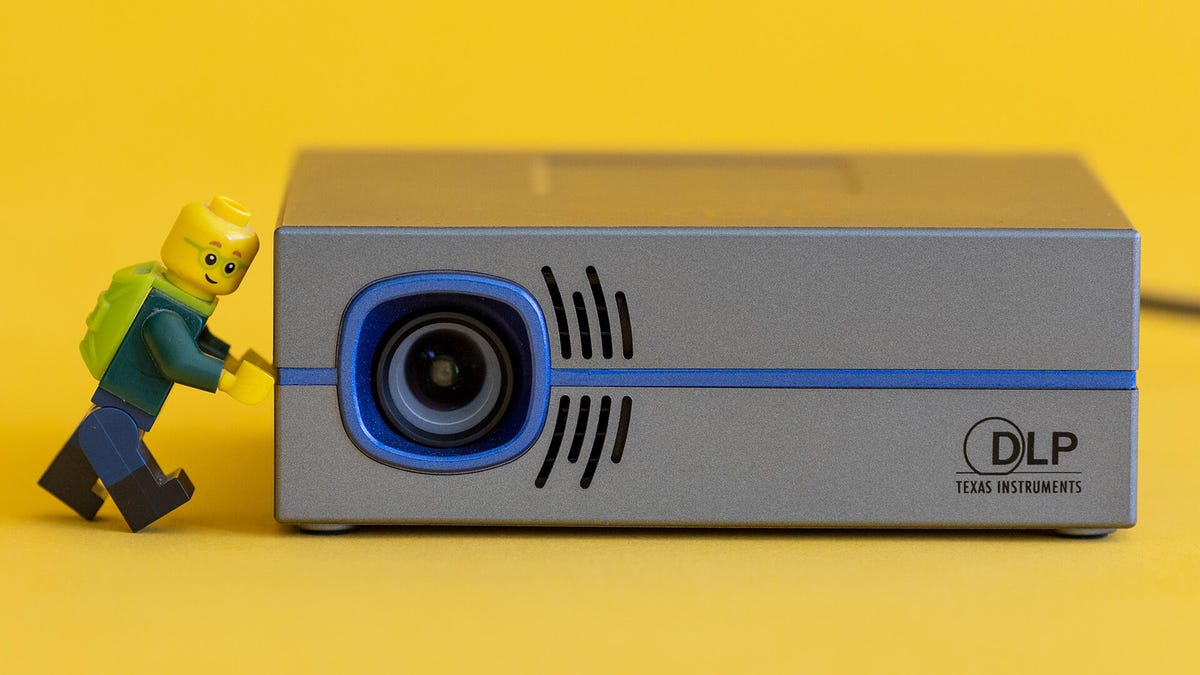
Action shot of me captivating projectors around my lab. Which is yellow.
Geoffrey Morrison
There’s a single 2-watt driver. I didn’t expect much deep bass and room-filling restful out of something the size of a tweeter but this speaker is glowing quiet. Fortunately there’s Bluetooth or a headphone jack if you assume analog, so you can add an external speaker (which I highly recommend).
Another disappointment is the inability to much the projector using USB. Instead, it comes with a despicable power adapter wall wart. There’s a USB-C input on the side, but it doesn’t much the unit. A projector this small, powered off a USB battery pack, would be amazing. I’m sure we’ll get something like that eventually but in the meantime you’ll need to lug the adapter near to use the P8..
The tiny remote is as long as one of my fingers and squeezes in all the notable buttons, but hard to use in the dark as they’re all the same size and shape.
Picture quality comparisons
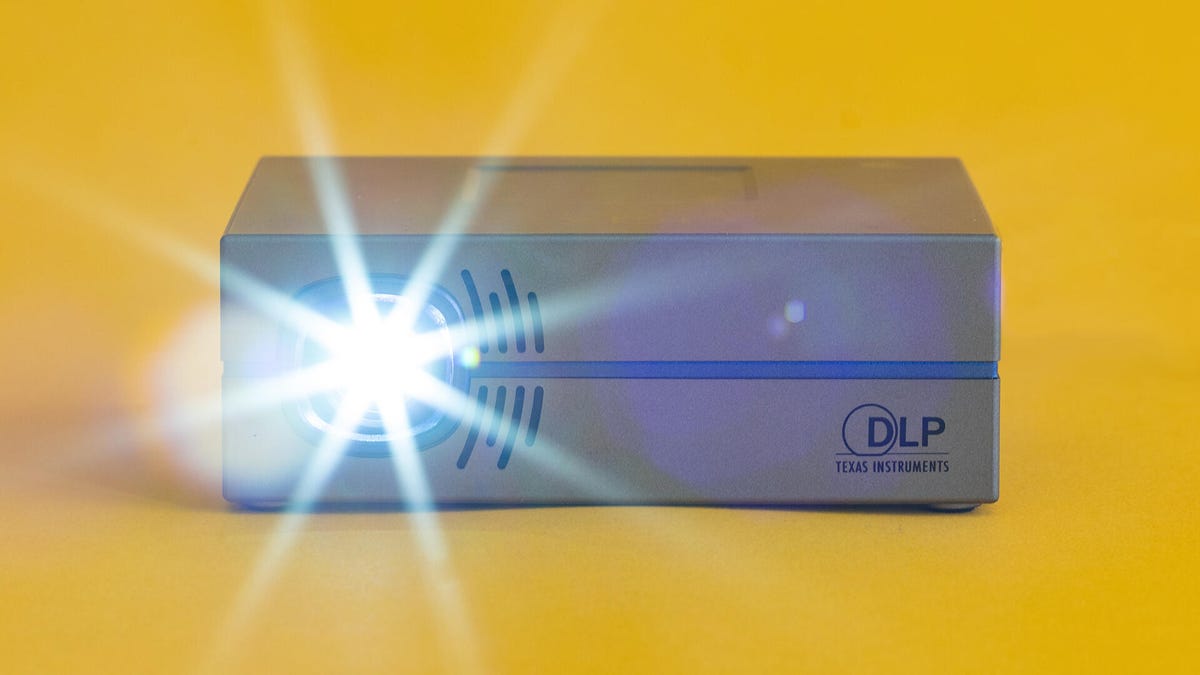
Geoffrey Morrison
I pitted the P8 anti the AAXA P6X and the Anker Nebula Capsule. The Capsule is a likely competitor for the P8, at roughly the same notice and more or less a similar size. One’s a cube, the other’s a cylinder, but both are “pocket sized.” The P6X is both a little larger and a little more expensive. It’s in the price ballpark, though, and really it’s only one larger. I connected them to a Monoprice 1×4 distribution amplifier and compared them side-by-side-by-side on a 102-inch 1.0-gain screen.
The P6X is so much brighter than the spanking two it almost seems like a different class of projector. It has 437 lumens vs the P8’s 230. The Capsule is barely visible in comparison, with only 85 lumens. In fairness, the P6X is more expensive and larger. Larger being relative when we’re talking tiny projectors. Picture quality isn’t that much different between the AAXAs, other than the brightness. Which is to say, it’s not tremendous, but given the price and size, not unacceptable.
Focusing, pun intended, on the P8 and Capsule, the comparison is closer… eventually. The P8’s picture quality out of the box is abysmal. It’s so over-sharpened it looks like the “before” image in an exposé throughout the evils of edge enhancement. Thankfully, there’s a modicum of record adjustments, something that can’t be said of the Capsule. Switching to the User picture mode and dialing the Sharpness down from “cartoon” to “this is as good as SD looks” does wonders for the overall image.
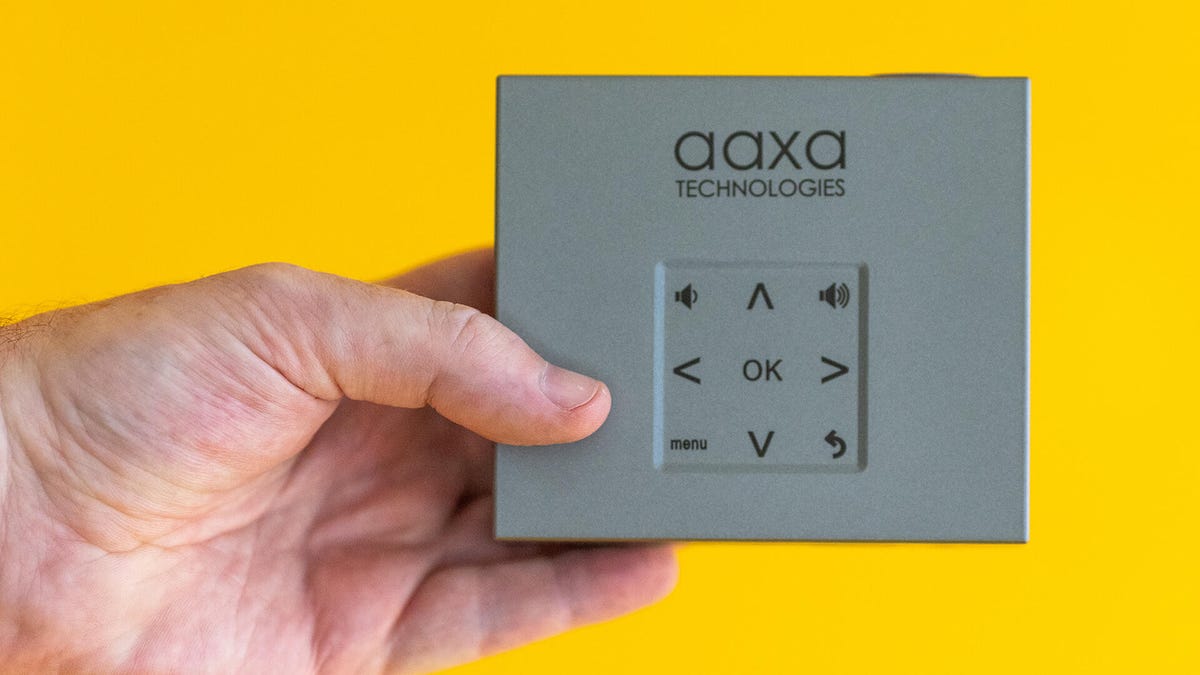
Geoffrey Morrison
With that done, and the smart temp in the warm mode, it gives the Capsule a run for its wealth. While the Capsule doesn’t have any picture adjustments, it looks fine out of the box. It could look better, I’m sure, with some tweaking, but we’ll never know. Does the inclusion of characterize settings mean the P8 can look better than the Capsule? Sort of. More that it brings them in line and they’re both equally “off” just in different ways. Colors aren’t true. Color temperature isn’t either. It’s not quite cartoonish, but neither look particularly realistic either.
One unexpected aspect of the P8’s performance is its disagreement ratio. I measured an average contrast ratio of 558:1, which is significantly better than anything under $1000 that I’ve measured in unique memory. So it looks far less washed out than the Capsule, which averages just 192:1. So that, combined with the added brightness, does push the P8 in front in terms of overall image quality.
Do these videophile particulars commercial for sub-$300 projectors? Probably not. I’d say other aspects are more important, which brings us to what I think are the two most important differences between the Capsule and the P8: brightness and batteries.
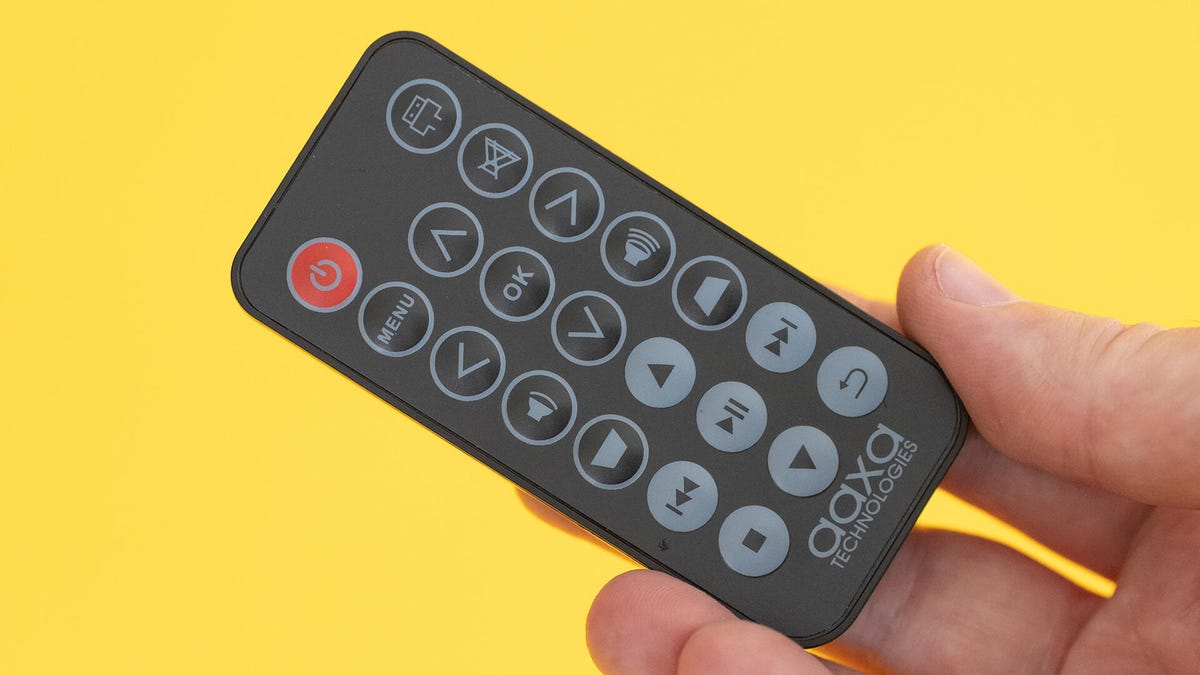
Geoffrey Morrison
The P8’s brightness is borderline worthy for its size and price. It puts far more expensive projectors to coarse. At ~50-inches this is bright enough to see with some ftrips on. Even at 100 inches, it’s a usable image. Other than the P6X I don’t know of novel projector this size that can do that. I’m not proverb you should use an inaccurate, 540p projector as your main TV… but for $250 you could do worse.
The Capsule can’t compete on brightness, but it does have a battery. The P8 does not. That’s a game changer, or maybe a different product category. You can put the Capsule in a backpack and peek a movie on the side of a tent. I think, for a lot of people, that’s the main use for a projector this runt. The P8 just can’t do that — not deprived of a very long extension cord. The P6X sure can, concept, for a bit more money and a larger unit.
Tiniest of the tiny
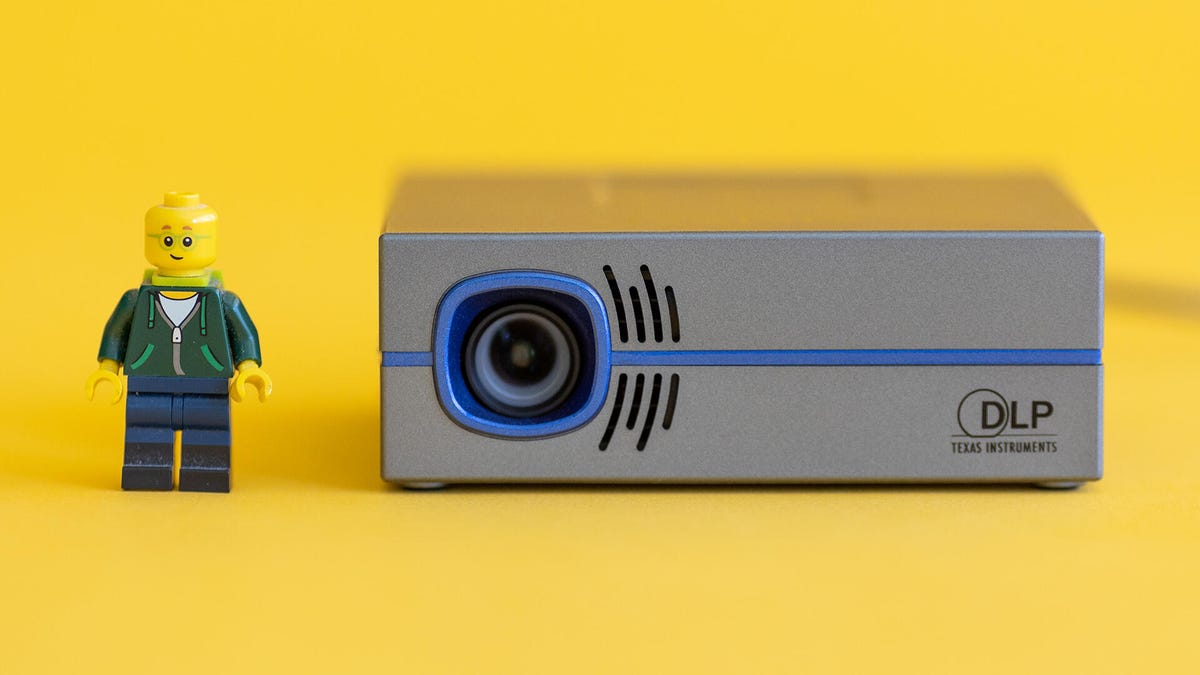
Geoffrey Morrison
The P8 is literally a pocket projector. You can fit it in your pocket. But it’s far brighter than novel projectors this size. It even has built-in Netflix and YouTube as an added bonus. I wish it recharged via USB-C, making it truly off-the-grid travel. But if off-the-grid portable is what you want, the P6X is only a small bit more expensive (and larger), or the Capsule is just as runt but far dimmer than both.
It’s a pretty specific niche the P8 fits into: tiny size, tiny ticket, huge brightness and no battery. An anomalous amalgam of attributes that somehow works. It’s hard not to like 230 lumens for less than $250.
AAXA P8 Portable Projector Review: Teeny Price, Tiny Size, Totally Bright. There are any AAXA P8 Portable Projector Review: Teeny Price, Tiny Size, Totally Bright in here.
About Me
Total Pageviews
Search This Blog
Blog Archive
-
-
-
-
-
-
- Tom Brady Reveals the 'Coolest Thing Ever' About H...
- Run Towards the Savings: Garmin's Venu 2 Smartwatc...
- Samsung's warning: Our Smart TVs record your livin...
- Samsung teases Galaxy Book reveals for MWC 2022
- Samsung accused of misleading customers on Galaxy ...
- Amazon's Echo Show 5 Falls to its Lowest Price Eve...
- Various Refurbished Samsung Phones Are on Sale at ...
- Save Big on Popular Samsung Smartphones Like the Z...
- Tesla raises prices on all EVs yet again
- How to send cash with Snapchat
- Save 56% and Get Moving on the Garmin Venu Sq Smar...
- Best 55-Inch TV for 2022: Top Features and Brands ...
- Samsung Expects Second-Quarter Profit to Climb 11%
- 2022 Maserati MC20 Review: Visceral Excitement
- Galaxy S21 Ultra works with Samsung's S Pen stylus...
- Home Price Growth Slows for Second Month in a Row....
- Inside Project Ara, Google's Lego-like plan to dis...
- Samsung Galaxy Z Fold 3 and Z Flip 3 appear in new...
- Looking Into Our EV Future on the Roads of Norway
- Best Budget Smartwatches Under $100
- LG Display bolts curved OLED TVs to motorized thro...
- Samsung Galaxy S22 Ultra: The rumors were right
- Galaxy S21's new features will make you want to ge...
- Best Budget 3D Printer 2022: 6 Great Printers at a...
- Google possibly hints at Pixel 6A in coloring book...
- The best Galaxy Z Flip features that you need to t...
- NHTSA shuts down Tesla's Passenger Play feature af...
- Snapchat now makes sure you're a real person
- The Apple Watch got some new competition at CES 2022
- Best Black Friday deals available now: 4K TVs, Bea...
- Is Samsung's Galaxy S22 Ultra Worth the Upgrade? L...
- OnePlus 10 Pro Review: A Great Android Phone With ...
- Samsung's Galaxy S22 Is Getting a New Bora Purple ...
- Home Price Increases Cooled Slightly in April
- OnePlus Nord CE vs. Nord vs. Nord N10 5G: OnePlus ...
- Galaxy Z Flip: Don't buy it, until you read this
- Tesla makes up over half of all EV registrations i...
- Fitbit Recalls Ionic Smartwatches Over Burn Hazard
- Mini-LED TV: What it is and how it improves Samsun...
- Xbox Games Arrive On Samsung TVs in Cloud Gaming Push
- Samsung Made the Galaxy Book 2 Lineup Feel More Pro
- Verizon Wireless Consumers Leave as Price Hikes St...
- Save Big on Popular Samsung Smartphones Like the Z...
- Galaxy Z Flip: Even I'm surprised by how much I st...
- Tesla's Phantom Braking Concerns Spark Federal Inv...
- Snapchat just made it super-easy to design a custo...
- Hit the Ground Running With 50% Off the Garmin Ven...
- Vizio M7-Series Quantum review: Real HDR picture f...
- Apple Watch 8: All of the Features on My Wishlist
- 'Live A Live' Review: Lost SNES Gem Gets a Charmin...
- S21 Ultra vs. S20 Ultra: Samsung Galaxy camera sho...
- Vizio M-Elevate Soundbar Review: Great Sound, Elev...
- Should You Upgrade to the Pixel 6? See How It Comp...
- Best Black Friday phone deals: Google Pixel 5A, Sa...
- Tesla raising price of Full Self-Driving option th...
- The Amazfit GTS 4 Mini Smartwatch Fitness Tracker ...
- Samsung E550 review: Budget TV done in by soft images
- Samsung led smartphone shipments for 2021, beating...
- Samsung's foldable concepts at CES 2022 revive dre...
- Vizio M-Series Quantum X Review: Bright HDR Pictur...
- The iPhone SE, Not the Mini, May Be the Future of ...
- Galaxy Z Flip review: Samsung's killer feature mak...
- Tesla Hit With New Lawsuit Alleging Racial Abuse
- Snapchat's latest feature: Pay to replay a message...
- Get a Suunto Smartwatch Fitness Tracker for as Low...
- Samsung's Self-Repair Program Now Open for Galaxy ...
- Samsung Galaxy S21 FE review: A great $700 phone t...
- Google Pixel Buds Pro Review: Better Fit, Better S...
- New and Rumored AT&T Phones in 2022: iPhone SE, Ga...
- AAXA P8 Portable Projector Review: Teeny Price, Ti...
- Scream trailer: Neve Campbell, Courteney Cox face ...
- Google Pixel Fold Rumor Says It's Smaller Than Gal...
- Tesla Model S Plaid Track Mode includes higher top...
- 9 Great Reads From CNET This Week: Smartwatches an...
- Samsung's QD-OLED TV might be here very soon. Here...
- Samsung's Galaxy Watch 4 Will Get An Apple Watch-L...
- Galaxy S20 vs Galaxy S11: Samsung's rumored name c...
- 2023 Mercedes-Benz EQS SUV Doesn't Cost Much More ...
- Best AT&T phones of 2022: Apple, Samsung and more ...
- Verizon Fios Internet Review in Broomfield, Colorado
- Galaxy Z Fold 3, Z Flip 3 water test: How deep can...
- First felony charges filed for fatal Tesla Autopil...
- Snapchat to end Snapcash payment system amid fierc...
- Newest Prime Day smartwatch deals on Apple Watch, ...
- Early Black Friday deal: This 70-inch Samsung 4K T...
- Samsung Q60B TV Review: Slim, Stylish and Surprisi...
- HP Envy 34 All-in-One PC Review: One Size Fits Some
- Verizon Fios Internet Review in Casper, Wyoming
- Verizon Fios Internet Review in Chapel Hill, North...
- Verizon Fios Internet Review in Grand Junction, Co...
- Samsung's cheaper Galaxy A phones get the spotligh...
- Shop West Elm's Clearance Sale For Modern Home Dec...
- Smartphone sales fall for first time ever, says Ga...
- Verizon Fios Internet Review in Rocklin, California
- Verizon Fios Internet Review in National City, Cal...
- Verizon Fios Internet Review in Rogers, Arkansas
- Amazon is Offering Up to $300 Off the Unlocked Sam...
- Verizon Fios Internet Review in Pontiac, Michigan
- Verizon Fios Internet Review in St. Clair Shores, ...
- Panasonic To Start Tesla 4680 Cell Production in M...
-
-
-
-
-
-
